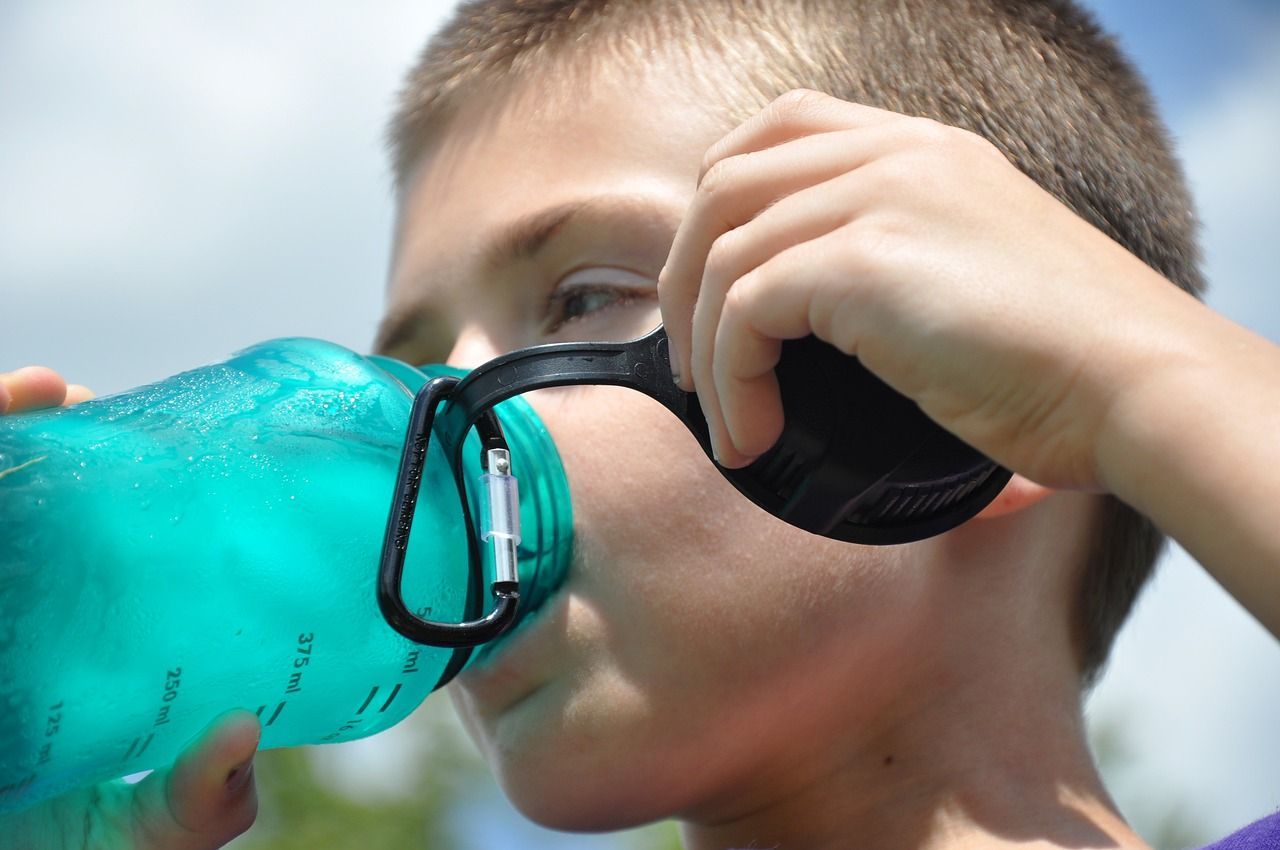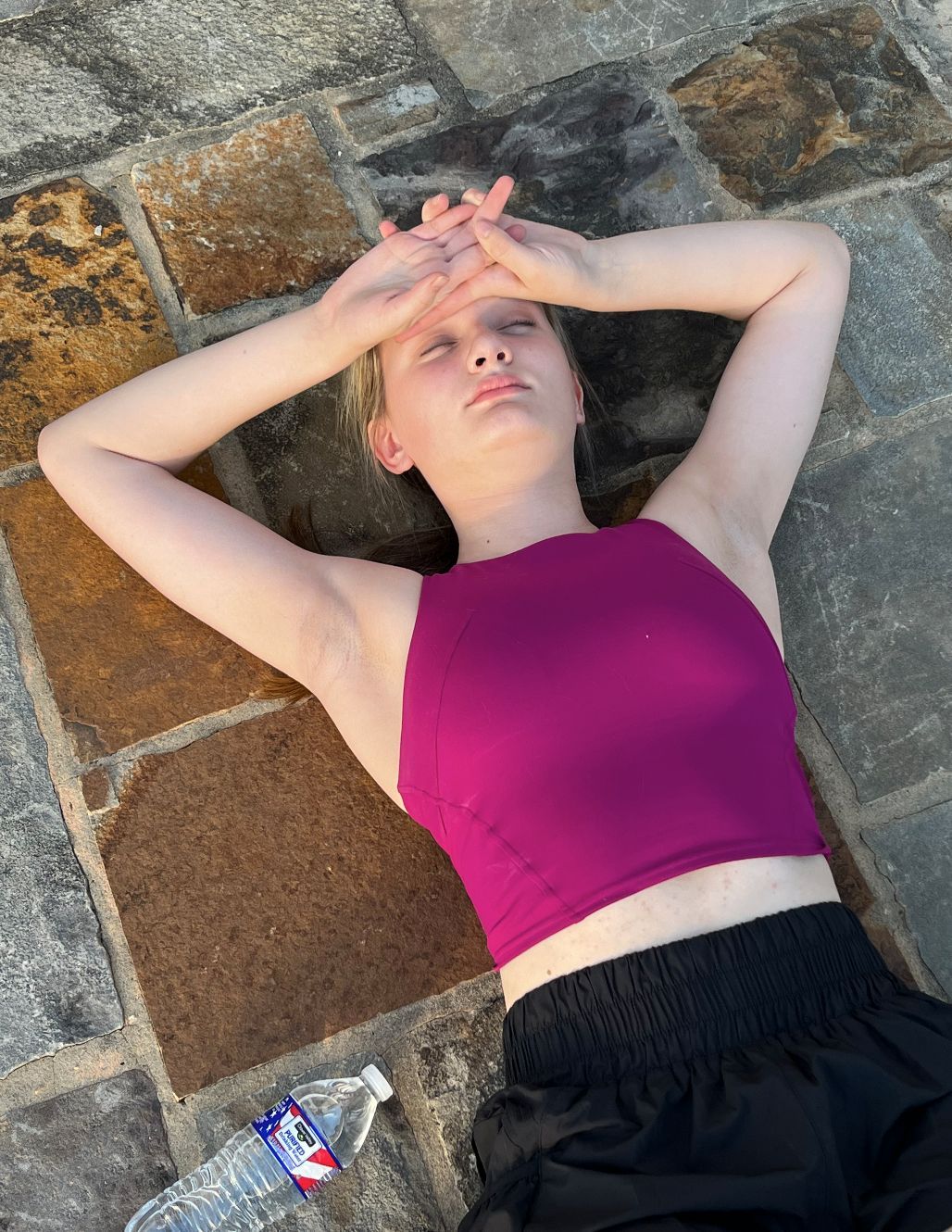Recognizing Heat Illnesses
Our bodies are quite good at adapting to various external conditions. When it’s hot, we regulate our temperature by sweating. The small water droplets at the surface of our skin use heat from our skin to evaporate, thus cooling us down. Under certain conditions, the maximum sweat rate of an adult can be up to 2 to 4 quarts per hour. To note, if there is high humidity in the air, our sweat doesn’t evaporate as quickly, which means that we don’t feel as much of a cooling effect.
We have all heard of the importance of replenishing our electrolytes, lost in the sweating process. Our cells use electrolytes to conduct electrical charges, which is how our muscles contract. Electrical charges also control chemical reactions in our cells. As well, the neurons in our brain use electrical events to communicate with each other. Keeping our electrolyte levels up is important!
It’s always good to know what signs to watch out for when too much heat is just too much. We hope that the descriptions below, of illnesses associated with heat (hyperthermia) will be helpful:
Heat Rash
Excessive sweating during hot, humid weather can cause the skin to get irritated.
Symptoms
Red clusters of pimples or small blisters appear, usually on the neck, upper chest, groin, under the breasts, and in elbow creases.
First Aid
- Keep the rash area dry, applying powder to increase comfort. Don’t use ointments or creams.
- Seek shelter in a cooler, less humid environment.
Heat Cramps
A person can get heat cramps when working or exercising (i.e. carrying out strenuous activity) that causes them to sweat a lot in a hot environment. The sweating depletes the body’s salt levels and, combined with drinking lots of water, the body’s electrolytes (nutrients) are diluted, causing painful cramps in muscles. Heat cramps may also be a symptom of heat exhaustion (see below).
At higher risk of heat cramps are: athletes, people who work outdoors, people in the military, etc.
Symptoms
- Muscle cramps, pain, or spasms in:
- Abdomen (belly)
- Arms or hands
- Legs or feet
- Rib cage
- Shoulders
- Body temperature may be normal.
First Aid
- Drink water and have a snack (such as a banana or a granola bar) or a drink (such as a sports drink) that replaces carbohydrates and electrolytes.
- Avoid salt tablets.
- Get medical help if the person has heart problems, has a low sodium diet, or has cramps that do not subside within 1 hour.
Heat Syncope (Fainting)
Fainting or getting dizzy when standing for too long or when suddenly standing up after sitting or lying down. Not acclimatizing and/or dehydration can contribute to heat syncope.
Symptoms
- Fainting (short duration)
- Dizziness
- Light-headedness from suddenly rising or from standing too long
First Aid
- Sit or lie down in a cool place.
- Slowly drink water, clear juice, or a sports drink.
Rhabdomyolysis
Also known as rhabdo, it is a medical condition associated with heat stress and prolonged physical exertion. Rhabdo causes the rapid breakdown, rupture, and death of a muscle. When muscle tissue dies, electrolytes and large proteins are released into the bloodstream, possibly causing irregular heart rhythms, seizures, and/or damage to the kidneys.
Symptoms
- Muscle cramps / pain
- Abnormally dark (tea or cola-colored) urine
- Weakness
- Exercise intolerance
- A person can also be asymptomatic.
First Aid
- Stop activity.
- Drink more liquids (water preferred).
- Seek immediate care at the nearest medical facility.
- Ask to be checked for rhabdomyolysis (i.e., blood sample analyzed for creatine kinase).

Heat Exhaustion
When the body sweats, it loses not only water but also salts and nutrients. People most likely to be affected by heat exhaustion are older folks, people with high blood pressure, and people who work in a hot environment.
Symptoms
- Headache
- Nausea
- Dizziness
- Weakness
- Irritability
- Thirst
- Heavy sweating
- Elevated body temperature
- Decreased urine output
First Aid
- Take the person to an urgent care clinic or call 911.
- Stay with the person until a medical professional is present.
- Give the person cool water to drink. Encourage frequent sips.
- Remove unnecessary clothing, including shoes and socks.
- Cool the person with cold compresses or have the person wash their head, face, and neck with cold water.
Heatstroke
Heatstroke is a life-threatening emergency condition. The body can no longer control its temperature, which rises rapidly, for example to 106°F or higher within 10 to 15 minutes, and the sweating mechanism fails. Heat stroke can cause permanent disability (brain damage, organ failure, etc.) or death if the person does not receive emergency treatment.
Symptoms
- Confusion, altered mental status, slurred speech
- Loss of consciousness (coma)
- Hot and dry skin, profuse sweating, or clammy skin
- Headache
- Seizures
- Visual problems
- Very high body temperature
- Rapid / shallow breathing
- Low blood pressure
- Increased heart rate
- Fatal if treatment delayed
Take immediate action:
- Call 911.
- Stay with the person until ambulance arrives. If you are the patient, make sure you are with someone who can help.
- Move the person to a shaded, cool area and remove outer clothing.
- Cool the person quickly, using the following methods:
- With a cold water or ice bath, if possible
- Wet the skin
- Place cold, wet cloths on the skin
- Soak clothing with cool water
- Circulate the air around the person to speed cooling.
- Place cold, wet cloths or ice on the head, neck, armpits, and groin; or soak the person’s clothing with cool water.
Finally, here are some tips for avoiding hyperthermia altogether:
- Take frequent breaks from the heat and go into air conditioning where possible. Give your body a chance to cool down.
- Stay out of the heat and replenish the nutrients (electrolytes) lost from sweating.
- Avoid beverages that contain caffeine such as energy drinks. Avoid alcohol which can affect your body’s ability to regulate its temperature. Stay well-hydrated with water.
- People who have experienced heat-related illness in the past are at higher risk of doing so again, so take precautions. People who are not physically fit also run a higher risk.
- Time outdoor workouts to avoid the hottest part of the day.
- Some medications affect the body’s ability to stay hydrated and respond to heat. People who take medications that narrow the blood vessels (vasoconstrictors), that regulate blood pressure by blocking adrenaline (beta blockers), that rid the body of sodium and water (diuretics) or that reduce psychiatric symptoms (antidepressants or antipsychotics) should take extra precautions when it’s hot outside.
- Get acclimated. Give your body time (one to two weeks) to get used to working or exercising in higher temperatures.
Stay cool! 😎
Resources and References:
- The Centers for Disease Control (CDC) on heat-related illnesses - https://www.cdc.gov/niosh/topics/heatstress/heatrelillness.html
- Wikipedia on perspiration - https://en.wikipedia.org/wiki/Perspiration
- Chicago weather channel on evaporation - https://wgntv.com/weather/weather-blog/why-does-wet-skin-always-feel-cold-but-dry-skin-doesnt/
- Texas Education Agency on evaporation rates - https://www.texasgateway.org/resource/136-humidity-evaporation-and-boiling
- Cleveland Clinic on heat cramps - https://my.clevelandclinic.org/health/diseases/24866-heat-cramps
- Cleveland Clinic on electrolytes - https://my.clevelandclinic.org/health/diagnostics/21790-electrolytes
- University of Queensland on neurons - https://qbi.uq.edu.au/brain-basics/brain/brain-physiology/action-potentials-and-synapses
- The Mayo Clinic on heat and exercise - https://newsnetwork.mayoclinic.org/discussion/heat-and-exercise-keeping-cool-in-hot-weather/
- The Mayo Clinic on heatstroke - https://www.mayoclinic.org/diseases-conditions/heat-stroke/symptoms-causes/syc-20353581
- Johns Hopkins on dehydration and heat stroke - https://www.hopkinsmedicine.org/health/conditions-and-diseases/dehydration-and-heat-stroke
- NPR on 8 mistakes to avoid if you’re going out in the heat -
https://www.npr.org/sections/health-shots/2023/07/12/1187025949/heatstroke-heat-exhaustion-symptoms-prevent?utm_source=npr_newsletter&utm_medium=email&utm_content=20230716&utm_term=8754392&utm_campaign=health&utm_id=65140263&orgid=199&utm_att1=





